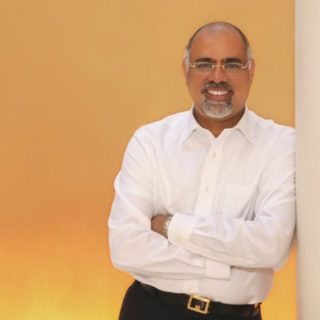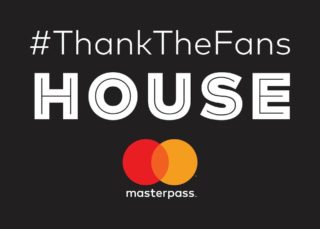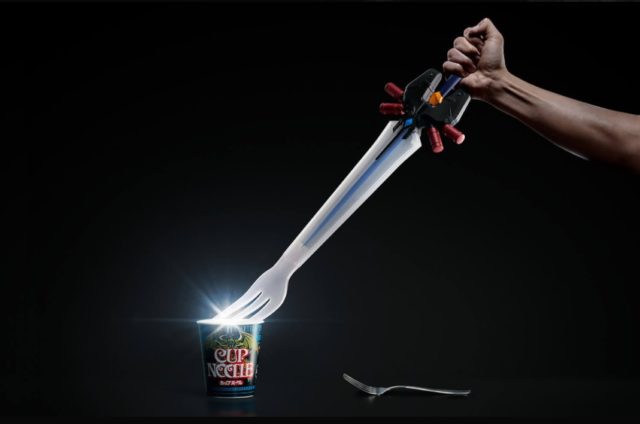ESports continues to grow its global audience, which according to Newzoo, now accounts for 256 million gamers. With those consumers engaging with eSports on a regular basis, including interacting with professional gamers during practice, there are many opportunities for brands to connect with this audience. While television networks like ESPN and TBS are opening up more traditional marketing opportunities, the digital and mobile nature of eSports also provides something unique.
Some of the top executives in eSports today, including Oscar Miranda, business development manager of eSports at Wargaming; Daniel Kelley, director of HyperX corporate marketing; Steven Arhancet, co-founder of Team Liquid; and Ujesh Desai, vice president and general manager of Logitech G talk to [a]listdaily about the different opportunities found in eSports and how non-endemic brands can get into the game.
How can non-endemic brands benefit from eSports?
[Miranda]: I regularly hear partner interest around reaching a younger audience. In addition, the mediums that eSports uses to connect with its audience have largely gone unnoticed by non-endemic brands. The eSports space sells itself to non-endemics with the promise of reaching a younger audience using non-traditional engagement mediums. Non-endemic brands also benefit from eSports by simply remaining relevant.
[Kelley]: ESports is becoming a worldwide phenomenon, creating global superstars and revenue opportunities that non-endemic brands can capitalize on. Non-endemic brands can strengthen and better define their brand within the key demographic of young gamers who are likely in the market for their products or services.
[Arhancet]: Reach and authentically engage with the millennial, male audience digitally for fractions of the cost they are used to. It’s a no-brainer for brands who put the effort into learning more.
[Desai]: ESports presents a huge opportunity to non-endemic brands to connect with an audience that has, in many ways, abandoned traditional media. ESports fans are highly passionate and fun. They represent a key demographic for building a sustained brand, and the fans are very likely to spend their time and money with brands they believe share their passions. For non-endemic brands I think eSports represents an opportunity to really connect authentically with one of the fastest growing mediums around.
What’s the key to connecting with the eSports audience through marketing?
[Miranda]: ESports became cool because it’s remained genuine with organic voices largely influenced by its gaming communities. Marketing efforts aimed at connecting with eSports audiences must champion these existing messages and voices or risk being immediately dismissed as fake. This is an intelligent audience with its finger on the pulse of authenticity. I don’t mean to imply that it’s an insurmountable challenge. But it is critical that marketing campaigns offer intelligent integration more so than traditional media.
[Kelley]: Be authentic. At HyperX there is a deep appreciation for the gaming scene, players and fans. We are committed to helping advance the eSports community, and as a result, we really treat every bit of marketing we do with a layer of loyalty and originality to ensure we’re helping the industry grow in the right way. This commitment is underscored by our team’s efforts to create products that help gamers do what they love most at fair price points. In addition, we are constantly working to forge relationships with new players, leagues and teams to help drive awareness for eSports and cultivate a positive gameplay culture.
[Arhancet]: Authenticity, be real folks.
[Desai]: ESports fans, and gamers in general, can sniff out BS like a bloodhound. In order to engage with them you have to do it thru wholly authentic messages and content they find compelling. It is okay to market to them, but it has to be real.
What opportunities does the digital and mobile consumption of eSports content open up for brands?
[Miranda]: As eSports fans, we’re constantly connected to our hobbies, whether digitally at home or mobile. Oftentimes, they’re using multiple devices to engage simultaneously. Recalling the question around how non-endemic brands can benefit from eSports: it’s in using newer, compelling tools to engage fans.
[Kelley]: ESports is a complete shift in entertainment and culture that is seizing a growing amount of young gamers’ attentions. With the bulk of viewership coming online, brands can garner significant global exposure while having a built-in way to measure, track and optimize their marketing efforts.
[Arhancet]: Be in early and reach a massive audience for fractions of what it would cost to get in late.
[Desai]: ESports fans, like many of the highly-connected youth today, consume massive amounts of media on their phones. A huge opportunity is to help deliver that media thru relevant and highly entertaining content. Logitech G does that through content that helps provide insight into the daily lives of the pros to better help fans connect to their heroes.
What advice would you give to a brand interested in entering eSports at this stage?
[Miranda]: It’s an intimidating space when you consider eSports explosiveness that’s attracted massive investments. My advice is to look beyond the headlines, recognize that the space and opportunity is real and there’s an assortment of players involved. While many of the top programs, teams and pros are backed by high-profile capital intent on staking an early claim, it’s also a wide open space constantly inviting new amateurs, up-and-coming teams, new leagues and games looking for their niche. These up and comers are far more accessible. If you want to get involved, there’s ample opportunity to do so. And boarding the hype train of a program that pays dividends later is a realistic possibility.
[Kelley]: Do your homework. What’s unique about eSports is that it’s a market shaped by multiple levels of content—the players, games, technology and fans. Moreover, eSports is a quickly growing and ever-changing landscape, so what’s true today might be completely different a year from now. With so many moves and new money coming in, be sure to understand and pick the spots that best align with your brand.
[Arhancet]: Talk to me.
[Desai]: Jump in! This is a highly engaged and passionate audience. Be real. Be authentic. Be engaging.
Given its current trajectory, where do you see eSports five years from now?
[Miranda]: Five years ago, the major eSports titles were hosting inaugural events at trade shows—a far cry from the sold out stadium experiences we’ve come to expect today. While I don’t think that changes, I do think that that we’ll be introduced to new engagement mediums offering greater, immersive experiences using existing technology—experiences that increase interactivity between viewers at home and the broadcasts they enjoy. On the administrative side, increased professionalism between competitors, publishers and developers to boast mature systems that were unheard of ten years ago today. I expect developers and publishers to map out eSports strategies with their titles early, prior to launch, harnessing the importance of audience retention on the back of its competitive gaming programs.
[Kelley]: Certainly, bigger with wider mass-market awareness. I envision more structure to the tournaments in terms of cooperation on scheduling, rules and potentially a move towards a players union where there is more consistency and transparency on player/team relationships. All of this will bring more and more opportunities for brands to get exposure within a very exciting and loyal community of gamers.
[Arhancet]: Where other professional sports are now, but just consumed digitally.
[Desai]: ESports is growing tremendously and Logitech G has played a key role in this transformation since the early days. Five years from now it is easy to imagine that eSports will be a top three player in competitive entertainment. That means it will be a mainstream sport and will have emerged from the shadows.
Learn everything you need to know to invest in today’s fastest-growing media channel—Competitive Gaming and eSports on 2.16.17 in Los Angeles. Go to alistsummit.com for more info.




 Newlin then detailed a global Twitch campaign to promote the movie Star Trek: Beyond. The campaign involved top streamers from Germany (
Newlin then detailed a global Twitch campaign to promote the movie Star Trek: Beyond. The campaign involved top streamers from Germany ( “ESports is great for streaming, but at the same time, there is a level of engagement that happens between a content creator and his or her audience that isn’t possible with a giant, televised eSports competition,” Carley explains. “I think that people tune in to streams for much more than competitive gaming. For instance, an area that has massively expanded on Twitch in the last two years is the speedrunning (playing games in the shortest time) community. Awesome Games Done Quick even raised a record $2.2 million dollars for the Prevent Cancer Foundation. This wouldn’t be technically categorized as ‘eSports,’ but it has incredibly high engagement from a competitive standpoint.”
“ESports is great for streaming, but at the same time, there is a level of engagement that happens between a content creator and his or her audience that isn’t possible with a giant, televised eSports competition,” Carley explains. “I think that people tune in to streams for much more than competitive gaming. For instance, an area that has massively expanded on Twitch in the last two years is the speedrunning (playing games in the shortest time) community. Awesome Games Done Quick even raised a record $2.2 million dollars for the Prevent Cancer Foundation. This wouldn’t be technically categorized as ‘eSports,’ but it has incredibly high engagement from a competitive standpoint.”



